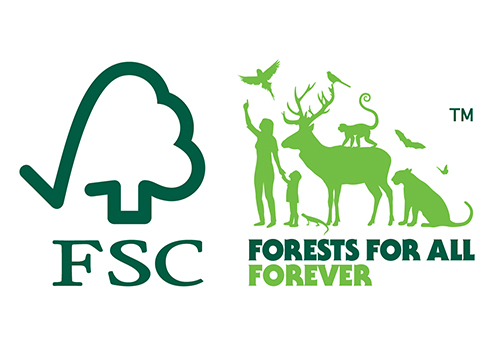In 2008, J. K. Rowling refused to allow a Finnish publisher, Tammi, to print Harry Potter and the Deathly Hallows because the paper they used was not Forest Stewardship Council (FSC) certified. Although Tammi printed the Harry Potter series on recycled paper, Rowling wanted even more environmentally friendly paper at that time.
On the other hand, Scholastic, a US publisher, announced that they had purchased almost twenty-two million pounds of FSC-certified paper for Harry Potter and the Deathly Hallows and would use at least 30 percent recycled fiber that satisfied FSC’s criteria. By printing every 784-page copy of the book this way, Scholastic raised awareness and showed the public their responsibility for the environment.
Raincoast Books, the publisher that published the Canadian edition of Harry Potter, adopted ancient-forest friendly paper at an early stage. According to the Raincoast Book’s website, the paper is not made of trees in ancient forests untrodden by humans. This is because when a forest is destroyed, it loses its ability to stabilize the ecosystem, and therefore contributes to environmental problems such as global warming.
In 2001, Nicole Rycroft, the campaign director for Markets Initiative, visited Raincoast Books and persuaded the company to use ancient-forest friendly paper. At that time, very few publishers agreed with Markets Initiative’s proposal; nevertheless, Raincoast Books decided to take responsibility for the environment and started adopting the paper. Now, 95 percent of its text-based books are printed on ancient-forest friendly paper.
Raincoast Books printed Harry Potter and the Order of the Phoenix on paper that was 100 percent post-consumer recycled and processed without chlorine and saved 28,221 trees. The company then won the Ethics in Action Award for Environmental Excellence. Rowling also appreciated their efforts and sent the following praise:
“The forest at Hogwarts is home to magical creatures like unicorns and centaurs. Because the Canadian editions are printed on Ancient-Forest Friendly paper, the Harry Potter books are helping to save magnificent forests in the Muggle world, forests that are home of magical animals such as Orangutans, Wolves and Bears. It’s a good idea to respect ancient trees, especially if they have a temper like the Whomping Willow.” The spokesman for Raincoast Books expected that by educating the public, producers could increase innovation and reduce the cost of the paper.
Raincoast Books’ contribution to the environment might have made Rowling aware of environmentally friendly paper and led her to make the statement about FSC-certified paper. And since the Harry Potter series is read by millions of readers all over the world, and Rowling’s influence is equally huge, the publisher’s accomplishment affected the entire industry. In this sense, Raincoast Books is a pioneer publisher.
Mike McMahon, the head of book paper sales at Midland Paper in New York City, states that recycled pulp, also known as fiber, costs more than virgin pulp due to the processes it has to undergo. Nevertheless, Raincoast Books continues protecting forests, encouraged by its success and the support of consumers. Raincoast Books is also lucky because it had the right to publish the popular Harry Potter books, which provided the company with an opportunity for marketing and publicity. For many minor publishers, using expensive recycled paper is still a difficult hurdle to clear. McMahon argues that instead, “Proper forest management is the real issue.” Thus, to make environmentally friendly paper available for any publisher, the industry needs to pay attention to various perspectives. Developing cost-effective methods of recycling paper is critical. It might be time to put the idea of not using virgin pulp aside and instead explore ways to care for forests without damaging ecosystems.

